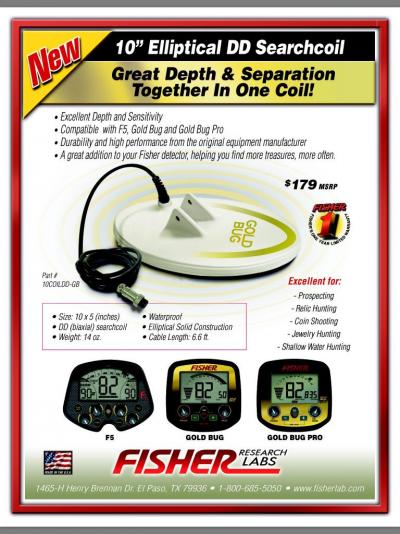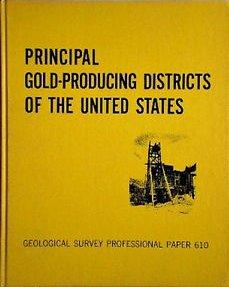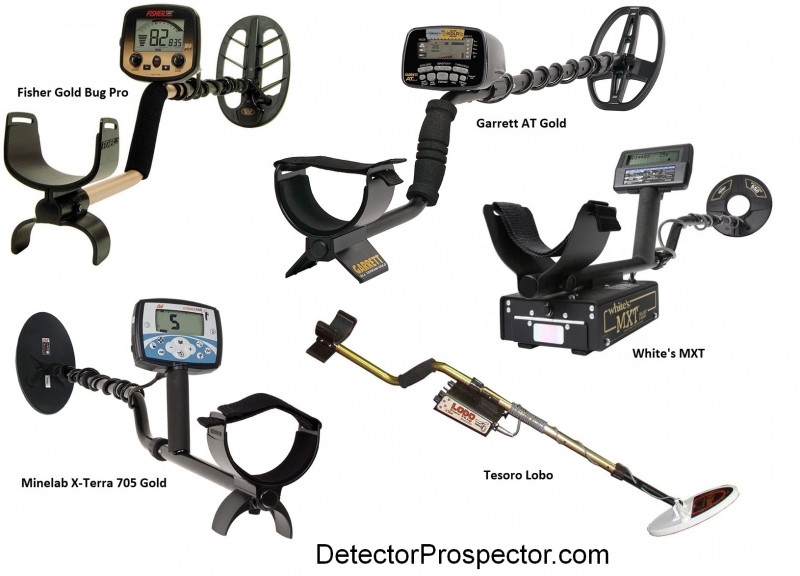-
Posts
19,803 -
Joined
Content Type
Forums
Detector Prospector Home
Detector Database
Downloads
Everything posted by Steve Herschbach
-
I just got this in the mail today: Hello, The makers of Gold Rush on the Discovery Channel are looking for gold miners. Do you think you have what it takes to operate heavy equipment, fix mechanical breakdowns and find gold! …Or do you know someone who does? Please apply if you … • have 2 years previous mining experience (preferably gold) • Or have at least 2 years employment operating heavy equipment (such as Loaders, Excavators and Dozers) • Or are a heavy equipment mechanic Please email the following information to: miners@raw.co.uk • Name • D.O.B • Phone number • Address • How many years’ employed as a Heavy Equipment Operator • How many years’ experience placer gold mining • Why you would be an asset to a gold mining crew • A recent photograph • A Resume Please help us spread the word about this opportunity by forwarding this email to anyone in the gold mining industry you think might be great for the job. Thanks, Gemma and Rebecca RAW TV, Producers of Gold Rush Third Floor, 13 – 21 Curtain Road, London EC2A 3LT UK Company Reg. 4305751 VAT: 788 4624 73
-
Hi Jack, Holding the Mode switch in the PINPOINT position on the Lobo removes the Auto Tune until the switch is released. It will indeed help keep weak targets from fading if employed immediately after acquiring said target. I am picking on the Lobo of course. As I note in the article I think a person can use any of them and be just fine. I know people who own and swear by the Lobo. I still think it would benefit greatly from having a manual ground balance option. For me personally having simultaneous all metal and disc modes on the Bug is the kicker. Like I said, each person needs to decide what is most important to them. I would not want everyone to take my article as an endorsement of the Bug per se. What is important is the thought process, and somebody else may employ needs and desires to arrive at a different outcome. If weight did not matter at all to me I might still be swinging an MXT. And if I was buying a detector as a gift for somebody not likely to really learn their machine the Lobo might be the choice. In fact I did just that. I bought my father one because it is pretty much turn on and go, and it has served him very well. The Lobo is a very forgiving machine. We used them at my pay-to-mine operation at Moore Creek for the very same reason.
- 33 replies
-
- whites mxt
- fisher gold bug
-
(and 1 more)
Tagged with:
-
Hi Steve, The F75 and T2 are excellent detectors. They run at a bit lower frequency than the Gold Bug Pro (13 kHz vs 19 kHz), hit big gold just a tiny bit deeper, and are a hair less sensitive to small gold. For the purposes of the comparison though they cost twice as much as all the detectors listed all for features not needed for nugget detecting. Still, the T2, the Teknetics variant of the F75, is one of the most popular detectors used in the gold rush overseas. And the F75 got glowing review by Jack Lange at http://www.fisherlab.com/magazine/ I of course did very well with the F75 SE as shown at http://www.fisherlab.com/Hobby/finds-Steve-Herschbach.htm and in fact am writing an article for a magazine about it. But this summer I fell in love with the Gold Bug Pro with 10" x 5" DD combo and ended up using it most if the time. It really just depends whether you want the detector to skew more towards small gold at the Gold Bug Pro higher frequency or towards bigger deep gold at the F75 lower frequency. Again though, I wanted to keep the article focused, and sticking to a similar price range makes for a better apples to apples comparison.
- 33 replies
-
- whites mxt
- fisher gold bug
-
(and 1 more)
Tagged with:
-

Congrats On The New Forum
Steve Herschbach replied to Rick K - First Member's topic in Detector Prospector Forum
Hey Jack, Yeah, sorry I saw so little of you. I will be back up next summer. You going to be around? I did not so much retire as move. Keeping plenty busy! -
USGS Professional Paper 610 by A. H. Koschmann and M. H. Bergendahl - A description of the geology, mining history, and production of the major gold-mining districts in 21 states. This 1968 publication obviously lacks the latest production figures but it still is a great overview to where an individual prospector can look for gold in the United States. It is a huge 283 page pdf download so be patient! Pay particular attention to the listed references in the extensive bibliography for doing further research. I have the original out-of-print hardback but what I paid for you get for free! You can download this here and find many more useful free books on this website at the Metal Detecting & Prospecting Library
-
Despite all the noise about pulse induction (PI) metal detectors these days I firmly believe that in the United States most beginning and many professional nugget hunters are often better served with a good mid-frequency VLF. For beginners I think it is more important to master the real skills involved in prospecting before investing a ton of money in a metal detector. If you can't find gold with a $700 detector there is little point in investing thousands of dollars in a detector that still probably will not find the person any gold. Perhaps a PI is required in most of Australia but I have seen very few places in the United States where a good VLF will not work very well or at least well enough. Certainly in Alaska that is the case, where low mineral ground and smallish gold is the norm. Even locations where large gold lurks are so loaded with iron junk a PI detector has a hard go of it. It is nearly impossible to convince die-hard PI users to accept this until they experience it for themselves. One of the best detectorists I know has found hundreds of ounces of gold including two nuggets each weighing over a pound, all with a White's MXT. He also has a Minelab GPX 5000 and is very good with it. This last summer we hunted a lot together in junk infested tailing piles. I tended to use my GPX 5000 and he tended to use his MXT. We ran neck and neck for finds, and he detected less and dug way less junk than I. When all the shallow stuff is gone a PI shows its value with extra depth. But in target rich environments, especially ones filled with junk, a good VLF is a worthy choice. Let's set the VLF versus PI thing aside though and accept for the purposes of this article that VLF detectors are still a good choice for many people in the United States. I know for a fact I could own nothing but a VLF and do very well indeed. So what VLF to own? Two detectors stand out in their high operating frequency as dedicated nugget detectors, the Fisher Gold Bug 2 and White's GMT. I could make a great argument for why either of these detectors will eke out gold where other detectors fail and do it consistently enough that a skilled operator would be wise to own either one. However, I think overall a better case can be made that if a person had to own just one VLF detector, a mid-frequency model would be a better choice. There is much more versatility offered plus a better balance of performance on all ground types and all gold sizes than the hot high frequency models. The contenders from the "Big Five" brands? The Fisher Gold Bug Pro (also sold as Teknetics G2), Garrett AT Gold, Minelab X-Terra 705 Gold, Tesoro Lobo SuperTRAQ, and White's MXT. All available for around $700 more or less. This is the choice I personally faced, and the decision took several years of use to settle. What follows is purely personal but I will explain why I ended up where I did. Fisher Gold Bug Pro, Garrett AT Gold, Minelab X-Terra 705 Gold, Tesoro Lobo, White's MXT First up, the White's MXT. Simply a superb detector, and one that has found me pounds of gold. Yet I am just going to go ahead and blow White's off at this point! Why? The weight. I am sorry White's, but at 4.3 pounds the MXT is the heaviest detector in this slug-fest. I love what the detector does, but I am no longer willing to forgive detectors with poor ergonomic factors, weight being the most obvious. In the 21st century, the day and age of the iPhone, poor ergonomics is not acceptable. The MXT needs to lose a pound, plain and simple. So I sold my MXT after one particularly arm wearing day. Now the Tesoro Lobo SuperTRAQ is a great beginners detector in that it is very easy to operate, but it also gets put aside. The detector is locked in ground tracking at all times while in all metal nugget mode. This is great for beginners but I personally find it unacceptable. I almost never use ground tracking systems as they mess with the signals from weak targets. If there was a locked or fixed mode it would be fine. Worse yet, the alternative discriminate mode has a factory pre-set ground balance. Sorry, fail. Just my opinion, but the Lobo is way overdue for an update after 16 years on the market. Garrett is to be commended for finally producing a waterproof detector that does not penalize the owner by weighing a ton and removing all the features. The AT Gold is a miracle in being waterproof and yet fully featured, with even the speaker being waterproof. And only three pounds with batteries! This detector is so wonderful I really do feel bad about taking a pass on it here also. Why? Sadly, the waterproof design also means special o-ring connectors for the coils and headphones. If you do not need the detector to be waterproof they are delicate connectors that collect dirt and require quite a bit of care to not mess up. The coil connection in particular is in a maddening location making it almost impossible to connect coils with bare fingers alone. A special adapter must be purchased if you want to have a choice in headphones. If you want waterproof the AT Gold is an obvious choice but I do not need waterproof for most of my nugget detecting. So down to two models, the Fisher Gold Bug Pro and Minelab X-Terra 705 Gold. Both under the magic 3 pound mark! Both with extremely powerful all metal modes. So powerful that in all metal mode these detectors give the PI units a run for depth in most ground on most gold in the US. This was tough for me as the X-Terra has a far richer feature set than the Gold Bug Pro and for many all around users would be the better choice. But I looked at both from strictly a nugget hunting perspective where those extra features are extraneous to the task at hand. It came down to this. In all metal mode the Gold Bug Pro is simultaneously and separately running in discriminate mode. The audio response is pure all metal, but you also get the probable target id, when possible, displayed on the screen. Very deep targets will have no target id, which is why we are using all metal prospect mode in the first place. The X-Terra 705 you can run in Prospect Mode or Discriminate Mode, but not both at once. This one thing leads to more efficient detecting with all the information you need on screen at once. The Gold Bug Pro gives you the target id, ground phase, and magnetic susceptibility reading all on screen at once while in all metal mode. ads by Amazon... That is how I settled on the Fisher Gold Bug Pro as my all around do everything nugget hunting model. It is not a coincidence it is also the lightest of the bunch at only 2.5 lbs with battery and 5” round DD coil and 2.7 lbs with the 5” x 10” DD coil. It is a basic unit that gets the job done, and that appeals to me. Plus, it does just fine for coins, relics, and jewelry if I wish. if I could improve only one thing it would be to swap the position of the target id and phase readout on the meter. I have to wrap this up by pointing out that these are all fine detectors. I can actually find gold about as well with all of them. The engineers have mid-frequency all metal detectors figured out, and in all metal mode these models are practically equivalent. Small nuances that help one model in certain ground cost it in another and it all evens out. So from a straight up all metal nugget hunting perspective I think a person can use any one of these detectors and be just fine. What differences there are show up far more when comparing discrimination features which are of little use to the nugget hunter. With that said, the final lesson in this article is that it is all the other factors a person should be looking at when making a choice. For me it was just lightweight basic operation. But if waterproof is important, the AT Gold is a no-brainer. The Lobo is very forgiving for beginners simply because it is locked in ground tracking mode. The MXT is a superior all-arounder, and the X-Terra has various tone schemes and notch discrimination features common on top-end detectors. You can make the case for any of them depending on your own particular needs and desires in a detector, and know you will be well served for basic all metal nugget hunting capability. We are lucky to have so many fine choices, all at very affordable prices.
- 33 replies
-
- whites mxt
- fisher gold bug
-
(and 1 more)
Tagged with:
-

Congrats On The New Forum
Steve Herschbach replied to Rick K - First Member's topic in Detector Prospector Forum
Thanks Jack and Teddy. Gotta love our furry friends! I used to have a Ted (Theodore), an amazing English Bull Dog. What a great little guy. I do miss my four legged prospecting companions but my wife and I have opted for smaller pooches these days. Just got two miniature dachshund puppies to harass our existing dachshund. Absolutely nuts, they are a joy to watch blasting around the house. If life gets me down nothing like a puppy for a quick pick me up. Best wishes to you and Teddy in the field! -

Congrats On The New Forum
Steve Herschbach replied to Rick K - First Member's topic in Detector Prospector Forum
Hi Rick, Congratulations on being the first member. It will be interesting to see if the forum gets off the ground. There are plenty of forums out there but this one is rare in that it is not dealer owned or operated. That removes lots of constraints. Thanks for the vote of confidence! -
I added the upcoming Minelab SDC 2300 metal detector to my website in the Equipment section. I will update this with new information as soon as it is available. The next release of information by Minelab is slated for January 31, 2014. According to the Codan (owner of Minelab) announcement at http://www.codan.com.au/Portals/0/investorpubs/2013%20Business%20Update%20and%20Profit%20Guidance.pdf the detector will be on the market in April 2014 but of course this could change.




